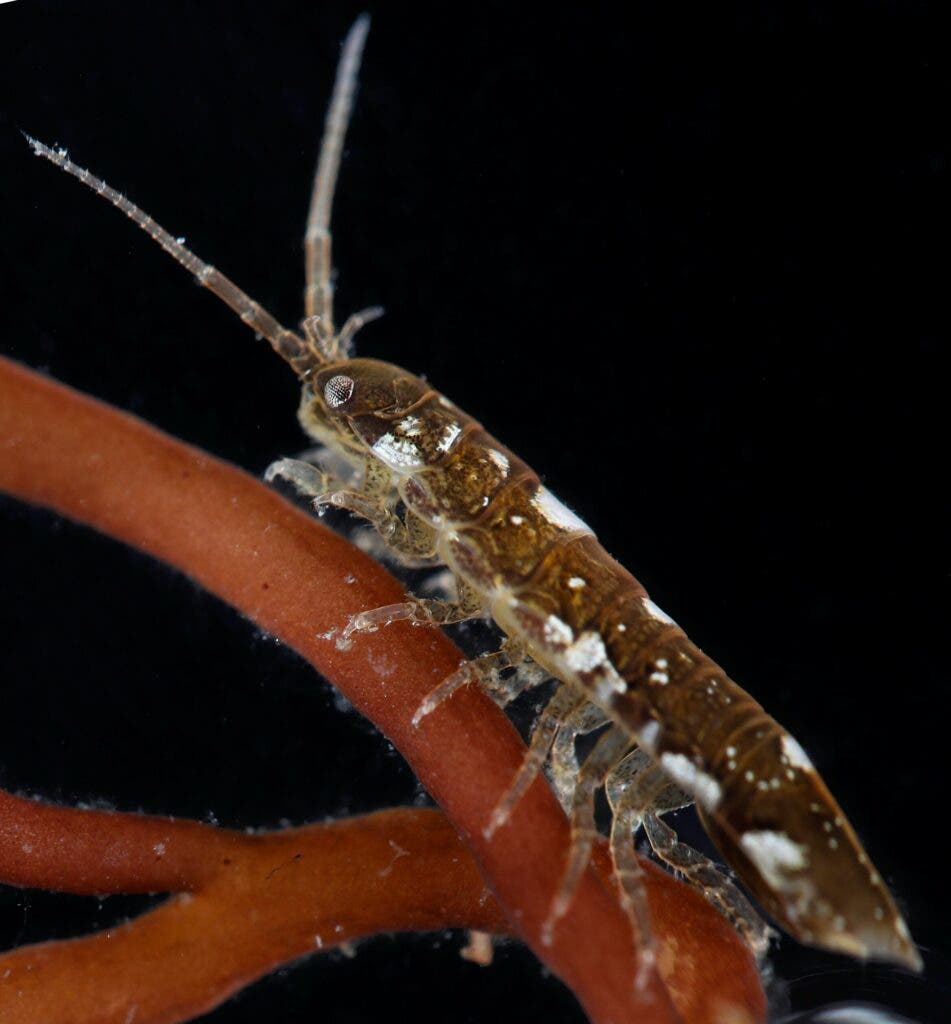In a new study published in Science, researchers describe that the tiny crustacean Idotea balthica ‘pollinates’ a particular type of seaweed; the first observation of an animal fertilizing algae.

The study, led by scientists from the Centre National de la Recherche Scientifique (CNRS), not only broadens the range of species employing this reproductive pollination technique but also raises the question of whether it actually originated on land or in the ocean.
Their research found that the reproductive cycle of the seaweed, red algae Gracilaria gracilis, depends on tiny crustaceans called idoteas. As the tiny crustacean wanders from frond to frond in search of food and refuge, they unintentionally catch the algae’s sticky spermatia, its equivalent of pollen, on their bodies and spread it throughout.
It was once believed that animals only pollinated terrestrial plants. In 2016, however, scientists revealed that zooplankton ‘pollinate’ Thalassia testudinum, a Caribbean seagrass species. Seagrasses are the only blooming plants that thrive in marine conditions, but they are closely linked to land plants. However, although seaweeds are technically plants, they are not closely related to terrestrial plants.
Scientists discovered Thalassia testudinum is pollinated by animals after seeing an unusually dense population of marine crustaceans visiting seagrass blossoms. Myriam Valero, a population geneticist at Sorbonne University in France, found a similar phenomenon in the red algae she was examining shortly after this discovery.
The variety of seaweed she was researching, Gracilaria gracilis, always appeared to be a favorite of invertebrates, particularly the isopod species Idotea balthica. Valero speculated that the isopods may have a role in the spread of spermatia produced by Gracilaria gracilis, which, like pollen grains, cannot travel on their own. Previous research revealed that the spermatozoa of Gracilaria gracilis were transported by ocean currents, but given their abundance in calm coastal rock pools, Valero suspected that another dispersal process was at work.
Valero and Sorbonne graduate student Emma Lavaut cultivated male and female Gracilaria gracilis and placed them six inches apart in seawater aquariums to test her hypothesis. Half of the tanks contained the tiny crustaceans, whereas the other half did not. At the conclusion of their experiment, they discovered that fertilization happened 20 times more frequently in tanks containing isopods than in tanks without them.
In a later experiment, the researchers transported crustaceans from tanks containing fertile male Gracilaria gracilis to tanks containing unfertilized female algae. They discovered that this led to high rates of fertilization. Under a microscope, it was discovered that the isopods had sperm attached to practically every region of their bodies.
“This is such a profoundly fascinating study that really shakes up our understanding of how seaweeds reproduce,” Jeff Ollerton told the New York Times. Ollerton is a visiting professor at the Kunming Institute of Botany in China who was not involved with the study but co-wrote a perspective article that accompanied the study in Science. “This type of interaction may have been going on long before plants ever evolved and using a third party for reproduction may have much deeper roots than we ever realized.”
There is, as it turns out, quite a lot to learn about life — both new, and ancient. Who knows what researchers will come across next?









